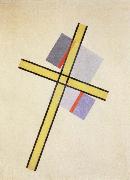Wholesale Oil Painting No Minimum |
|||||||||||
|
|
|||||||||||

|
|||||||||||
|
|
|
||||||||
Laszlo Moholy-NagyHungarian 1895-1946 was a Hungarian painter and photographer as well as professor in the Bauhaus school. He was highly influenced by constructivism. He was a strong advocate of the integration of technology and industry into the arts. Moholy-Nagy was born L??szl?? Weisz to a family of mixed Jewish and Hungarian heritage. His cousin was Georg Solti. He changed his German-Jewish surname to the Magyar surname of his uncle, Nagy. Later, he added the pseudonym Moholy to his surname, after the town in which he grew up (Mol, today in Serbia). After studying law in Budapest and serving in World War I, Moholy-Nagy was in Vienna in 1919, where he first discovered constructivism in exhibitions of works of Malevich, Naum Gabo and El Lissitzky. In 1923, he replaced Johannes Itten as the instructor of the preliminary course at the Bauhaus. This effectively marked the end of the school's expressionistic leanings and moved it closer towards its original aims as a school of design and industrial integration. The Bauhaus became known for the versatility of its artists, and Moholy-Nagy was no exception. Throughout his career, he became proficient and innovative in the fields of photography, typography, sculpture, painting, printmaking, and industrial design. One of his main focuses was on photography. He coined the term "the New Vision" for his belief that photography could create a whole new way of seeing the outside world that the human eye could not. His theory of art and teaching was summed up in the book The New Vision, from Material to Architecture. He experimented with the photographic process of exposing light sensitive paper with objects overlaid on top of it, called photogram. While at the Bauhaus, Moholy's teaching in diverse media -- including painting, sculpture, photography, photomontage and metal -- had a profound influence on a number of his students, including Marianne Brandt. He was editor of the art and photography department of the European avant-garde magazine International Revue i 10 from 1927 to 1929. Moholy-Nagy resigned from the Bauhaus in 1928 and worked in film and stage design in Berlin, where he was required to submit his work to be censored, and then in Paris and Holland before moving to London in 1935. In England, Moholy-Nagy formed part of the circle of ??migr?? artists and intellectuals who based themselves in Hampstead. Moholy-Nagy lived for a time in the Isokon building with Walter Gropius for eight months and then settled in Golders Green. Gropius and Moholy-Nagy planned to establish an English version of the Bauhaus but could not secure backing, and then Moholy-Nagy was turned down for a teaching job at the Royal College of Art. Moholy-Nagy made his way in London by taking on various design jobs including Imperial Airways and a shop display for men's underwear. He photographed contemporary architecture for the Architectural Review where the assistant editor was John Betjeman who commissioned Moholy-Nagy to make documentary photographs to illustrate his book An Oxford University Chest. In 1936, he was commissioned by fellow Hungarian film producer Alexander Korda to design special effects for Things to Come. Working at Denham Studios, Moholy-Nagy created kinetic sculptures and abstract light effects, but they were rejected by the film's director. At the invitation of Leslie Martin, he gave a lecture to the architecture school of Hull University. In 1937, at the invitation of Walter Paepcke, the Chairman of the Container Corporation of America, Moholy-Nagy moved to Chicago to become the director of the New Bauhaus. The philosophy of the school was basically unchanged from that of the original, and its headquarters was the Prairie Avenue mansion that architect Richard Morris Hunt designed for department store magnate Marshall Field. Unfortunately, the school lost the financial backing of its supporters after only a single academic year, and it closed in 1938. Paepcke, however, continued his own support, and in 1939, Moholy-Nagy opened the School of Design. In 1944, this became the Institute of Design. He authored an account of his efforts to develop the curriculum of the School of Design in his book Vision in Motion. Moholy-Nagy died of leukemia in Chicago in 1946. |
||||||||
|
|
||||||||
yellow cross q.7
yellow cross q.7 Painting ID:: 56532 |
mk247
1922,oil on canvas,37.75x28 in,96x71 cm,galleria nazionale d-arte moderna,rome,ltaly mk247 1922,oil on canvas,37.75x28 in,96x71 cm,galleria nazionale d-arte moderna,rome,ltaly |
|||||||
|
CONTACT US |

